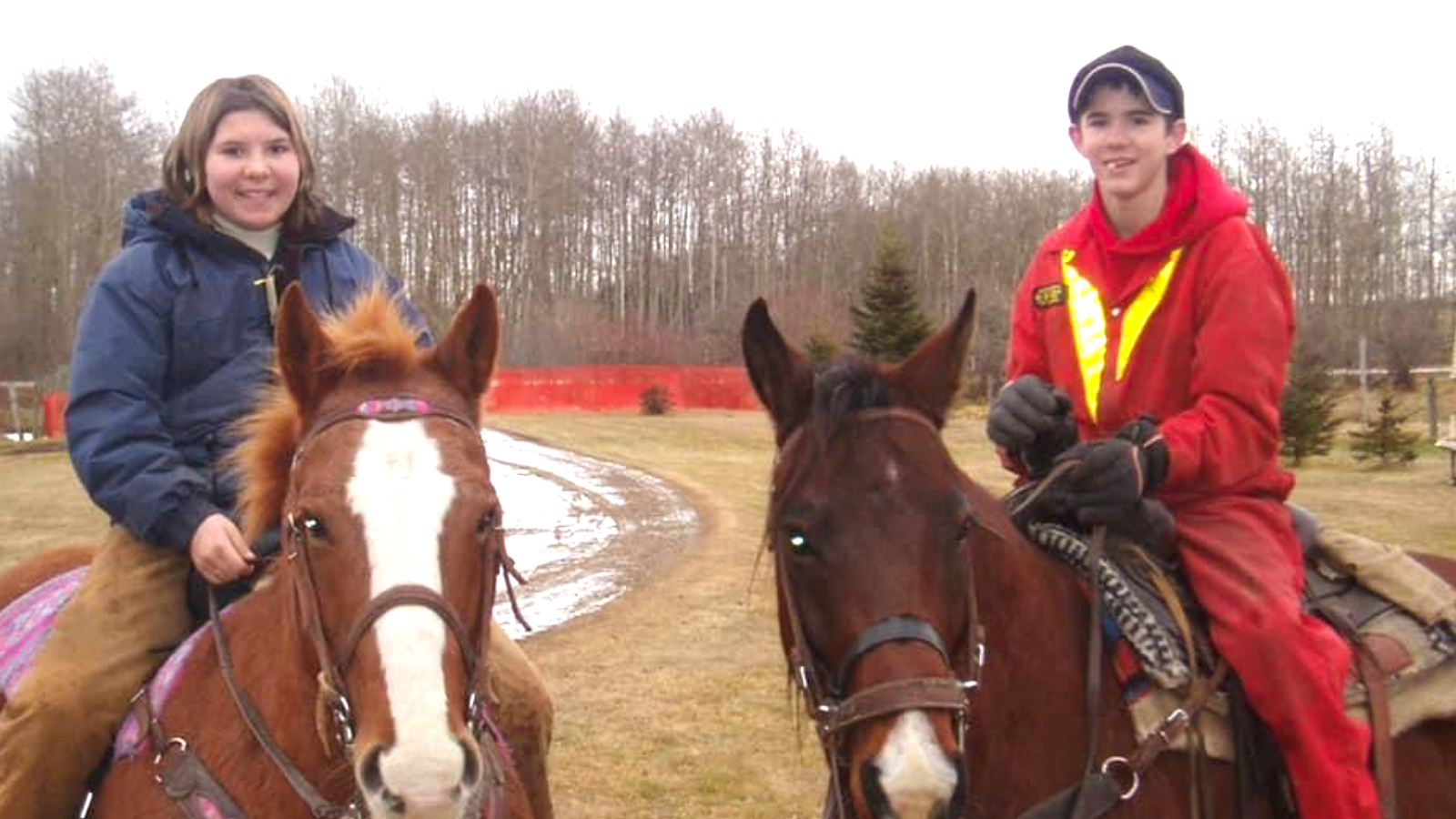“Complacency is dangerous” is the message Drayton resident Maureen Hollingsworth wants to spread.
Hollingsworth, who is a truck driver in the oil and gas industry, had her first opportunity to share her son’s story at a safety meeting held by Plains Midstream on November 15.
“Twelve years, five months, and ten days ago, my life changed,” she says.
On June 5, 2011, her son Colin Stewart, better known as Mouse, went to work in the morning, but didn’t come home in the evening. At the age of 23, Mouse had made a fatal choice at work and forever changed the lives around him.
“It was the day my heart was broken. It was also the day I had to start living without one of my greatest gifts,” says Hollingsworth.
For those in attendance, Hollingsworth shared anecdotes of Mouse. Though he had started out as a premie, Mouse had lived every day to the fullest.
Hollingsworth says that he was always active. He could be found quadding, dirtbiking, horseback riding, and snowmobiling most days. During his downtime, Mouse read.
“He would read anywhere,” says Hollingsworth.
Mouse also had a nephew Xzander, and he spent as much time with him as he could. Whenever possible, Mouse was buying Xzander gifts, many of which were playstation games.
Hollingsworth says the spring of 2011 was very wet. With all of the rain, Mouse couldn’t be out working.
Finally, at the end of May, the weather improved and Mouse and three others went to work.
For ten days the four guys, all aged between 19 and 23, were working long hours. It wasn’t unusual for a day to be 18-20 hours long.
“Not only are they over-houred and fatigued, let’s throw a whole lot of inexperience into the picture,” says Hollingsworth.
One of the 19-year-olds working that day had only been in Canada for five days.
“It’s now a Sunday afternoon and the job is completed. They were done early and were excited to go home. But that’s when complacency came into the picture,” she says.
Mouse’s machine was across the job site. He was tired. So, he hopped onto the back of another machine to catch a ride over to the other side of the job site.
The 19-year-old who was new to Canada, hopped into that machine. He didn’t know where everyone was on the site, and he didn’t walk around his equipment. Instead, he got in, flipped the switch, and that was the end for Mouse.
“Four went to work,” says Hollingsworth. “Three came home. Had [the driver] taken less than one minute and walked around the equipment, I wouldn’t be here talking about safety.”
Hollingsworth says after she was done speaking, Dan Lyons, the man who’d invited her to speak stood to say something. But after a moment of struggling to speak, he suggested a ten minute break for everyone.
“He told me he will never ever forget this,” says Hollingsworth.
She says one of the biggest frustrations she has with the situation is that people always want to know what kind of machine it was or where Mouse was working. For her, it doesn’t matter where it happened or what he was doing. The same lesson can be applied to all industries.
But she says that when she shares it was an industrial farming incident, many act as though that makes the situation non-applicable. Though Mouse died because he wanted to hitch a ride on a manure spreader, the situation is still the same in other industries. There was no walk around, no knowledge of where everyone was, and there was complacency on the worksite.
In 2011, farmers and ranch workers were still exempted from the Labour Code. There were no requirements for safety and they were not covered under the Occupational Health and Safety Act. In fact, when OH&S found out that his death was from a farming accident, they said there was nothing they could do.
“At that time there was no farm safety. None. Zero,” says Hollingsworth.
According to a blog written by Jennifer Koshan of the Faculty of Law at the University of Calgary, a study done by the Alberta Federation of Labour in 2017 showed “agricultural workers are more than twice as likely to be killed on the job as other workers in Alberta, and 4,000 work related injuries occur on Alberta farms each year.”
It wasn’t until Bill 6 was brought in by the Alberta Government in 2016 that things began to change for the farming industry. Now employers are required to have safety practices and are expected to meet the Alberta Occupation Health and Safety Act requirements for their industry.
“Bill 6 also brought farm and ranch workers who are paid, non-family members into the basic health and safety protections under the Occupational Health and Safety Act as of January 1, 2016. Farm and ranch employers are now obliged to ensure the health and safety of their workers, and the workers are able to refuse unsafe work that presents an imminent danger. OHS officers are authorized to inspect farm and ranch workplaces to ensure that that work is not being carried out in a manner that is unhealthy or unsafe, and serious injuries and accidents on farm and ranch work sites must be reported and investigated,” says Koshan’s article.
After the accident, Hollingsworth and Mouse’s dad Marvin Stewart spoke with the young man who’d been working the manure spreader that day. She says she felt awful for him because he was thousands of miles away from home. “He couldn’t even get a hug from his mom,” she says.
They made it clear to him that Mouse should never have been on the back of the spreader. They told him that Mouse knew better, and that he shouldn’t blame himself for what happened.
“I don’t want another mom to hear these words, ‘Your child has died due to safety reasons,’” she says. “I never want another mother to get a call from her kid saying he just killed someone at work.”
While it’s too late to help Mouse, Hollingsworth says she hopes she can spread the message far and wide. She is already slated to speak at two safety meetings at All Choice Rentals and hopes she has the opportunity to do more.











